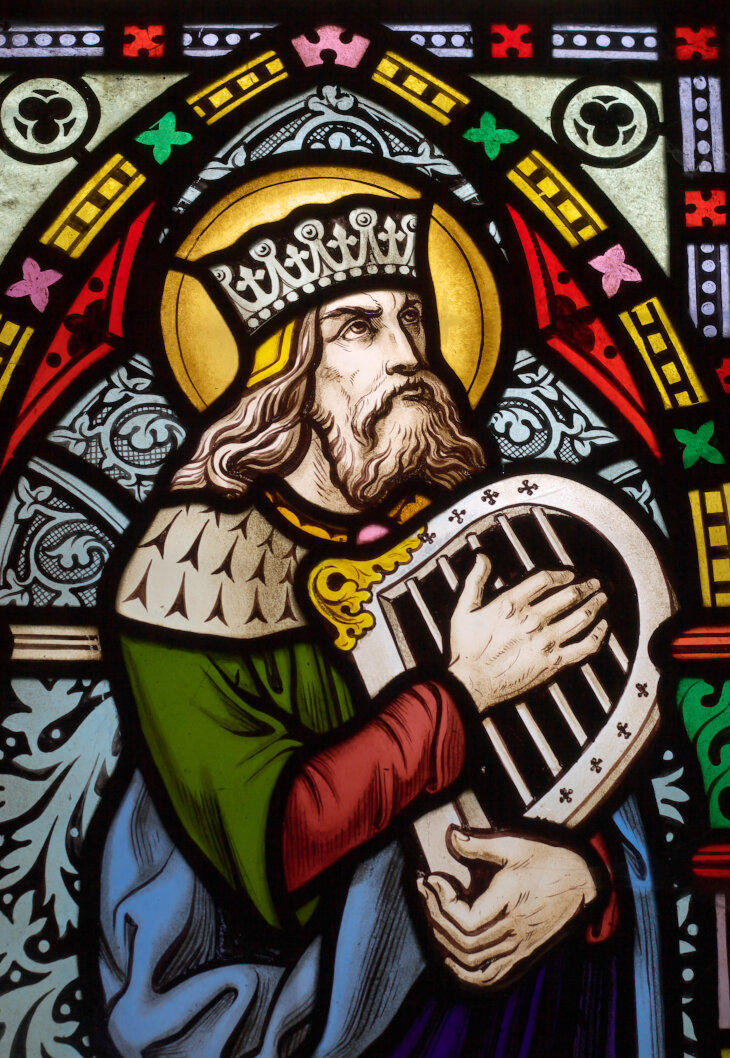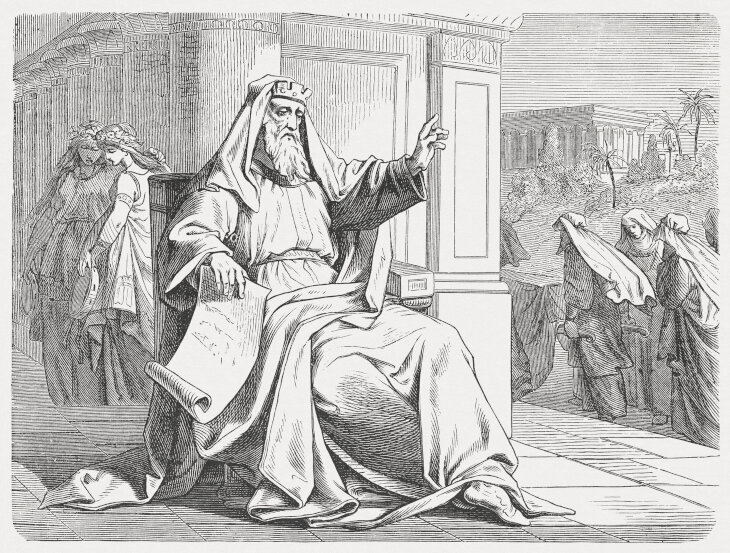 Iran’s Attack on Israel
Iran’s Attack on Israel


10 min read
A snapshot view of the books of Joshua, Judges, Samuel, and Kings, chronicling the story of the Jewish nation after the death of Moses.
In Hebrew, the Jewish Bible is called Tanach (תנ׳ך), which is an acronym for its three main sections, Torah, Neviim (Prophets), and Ketuvim (Writings). The second section, Prophets, is divided into two parts, the Early Prophets and the Latter Prophets. The Early Prophets contain four books: Joshua, Judges, Samuel, and Kings, and chronicle the story of the Jewish nation starting with the death of Moses in 1272 BCE; cover the period of conquest and settlement of the land of Israel, as well as the entire period of the Davidic Dynasty; and end with the Babylonian exile and destruction of Solomon’s Temple in 422 BCE.1
According to the Talmud,2 the prophets and Jewish leaders alive during the period of the Early Prophets compiled, edited, and redacted the work’s different books. Some of their writings were contemporaneous with the events described, while others were compiled later. They also clarified the texts when necessary.3
The prophet and leader, Joshua, wrote the entire book of Joshua, with the exception of the book’s ending that describes his death and burial, which is ascribed to Pinhas, an important personality mentioned in the Torah and Early Prophets.
The book of Judges is attributed to the prophet, Samuel, although his authorship is not mentioned in the text itself. However, the book, which describes a period of relative lawlessness, ends (Judges 21:25), “In those days there was no king in Israel, everyone did as he pleased,” and seems to establish it as a prelude to the book of Samuel—the book that first establishes the Jewish monarchy—adding credence to the idea that Samuel indeed was its author.
Samuel is the author of the book of Samuel, at least up until his death, which is recorded in Samuel I 28:3. The rest of the book was written by the prophets Gad and Nathan. The book of Kings was written by the prophet Jeremiah.
The Talmud4 notes that numerous prophets arose in Israel throughout the biblical period, but that only those prophecies considered essential to future generations were recorded. The Early Prophets, which detail the conquest and settlement of Israel, as well as the troubles that befell the Jewish people when they embraced their neighbors’ pagan religions, was written to instruct future generations about the centrality of Israel to Jewish belief, and that the Jewish connection to the land is dependent upon the Jewish people’s commitment to living Jewish lives.
According to the Talmud,5 if the Jewish people hadn’t erred, the five books of the Torah and the book of Joshua would have been enough. The Torah, because it provides the foundation for living a Jewish life, and Joshua, because it explains how the land of Israel was organized and divided.
The book of Joshua is divided into two parts. The first part describes the conquest of Israel. It starts with the Jewish people crossing the Jordan River, and continues with the battle and destruction of Jericho, the troubles they experienced while fighting in Ai, and, during a battle in Gibeon (in central Israel), describes how the sun was miraculously stopped in the sky. The second part describes, in great detail, how the land of Israel was divided amongst the tribes, along with the various tribal borders.

The book also explains how a number of commandants from the Torah were performed upon arrival in Israel including reciting the blessings and curses at Mount Ebal and Gerizim (from Deuteronomy 27), performing the Passover sacrifice, establishing cities of refuge, and many others.
The book of Judges covers about 400 years of Jewish history, from the death of Joshua in 1300 BCE, until the birth of Samuel in about 905 BCE.6 It’s a period rife with conflict, civil war, attacks from neighboring nations, and struggles with the various peoples settled throughout the areas Joshua failed to conquer. It’s also a period when the Jewish people, lacking a strong leader like Moses or Joshua, first abandon their Jewish faith in favor of near eastern pagan religions and other occult practices.
The stories in the book of Judges generally follow a pattern that starts with the different Jewish leaders who arose during that time, unified the people, got them to repent from whatever transgressions or pagan practices they followed, and dealt with the different physical threats—be they military or otherwise—that came about.
Some of the different heroes in the book of Judges include Ehud, who defeats the Moabite king, Eglon; Deborah, under whose leadership the Canaanite leader, Sisera is defeated; Gideon, who defeats the Midianites; and Sampson, who, despite unusual circumstances, overcomes the Philistines.
Other episodes in the book of Judges include a civil war against the tribe of Ephriam, the story of Micah’s idol, and a civil war against the tribe of Benjamin following a brutal rape in the town of Givah.
The book of Samuel, in a sense, is an attempt to solve the problems that arose during the period of the judges, which include appointing a strong central leader—in the form of a king—and, ultimately, laying the framework to establish a permanent, and exclusive, location for the different sacrificial services proscribed in the Torah, as well as home for the Ark of the Covenant.

Although the book bears Samuel’s name, he dies in its first third—and, as noted, most of its contents were written by others—and the book’s real protagonist is King David. The major events chronicled in the book of Samuel include the prophet’s birth; multiple battles against the neighboring Philistines—including their capturing the Ark of the Covenant—King Saul’s rise to power; David’s defeat of the Philistine hero, Goliath; Saul’s downfall, mental instability, obsession with David, and ultimate death; David’s ascension to the throne, the different wars he fought including his conquest of Jerusalem, his marriages and children, the rebellions he repressed, his struggles and moral failings, and, ultimately, his greatness and piety.
The book of Kings starts at one of the highest points in Jewish history, and ends with one of its lowest. Throughout the book, the Jewish people struggle with pagan beliefs and practices, civil unrest, and division; and that opens the door to invasion, conquest, and exile.
The book’s first chapters describe King David’s final years, and Solomon’s ascension to power. Under Solomon’s rule, Israel’s enemies are defeated, the nation prospers, and a permanent Temple is built in Jerusalem. But, following his death, the kingdom splits into two separate nations, Judah and Israel, and, despite bright spots along the way, ultimately falls apart.

In addition to the rule of the many kings discussed in the book, it also covers the exploits of the great prophets Elijah and Elisha, the many wars fought throughout the period, the Assyrian conquest of Israel—and the resulting Ten Lost Tribes—the Babylonian conquest, which includes their siege of Jerusalem, eventual destruction of the city and Temple in 422 BCE, and subsequent capture and exile of the survivors to Babylon.
Some of the personalities and events from the Early Prophets have turned up in archeological digs, both in Israel, as well as in the records of conquering nations. Some of the Israelite kings, especially from Ahab’s reign and onward, have been found. Ahab, for example, is mentioned, by name, on the Mesha Stele (also known as the Moabite Stone), which is significant since the Moabite king, Mesha, is also mentioned in the book of Kings. “Ahab of Israel” is also mentioned on the Kurkh Monoliths found in eastern Turkey. The Tel Dan stele, found in northern Israel, dates to the ninth century BCE, mentions Ahab’s son, Jehoram, and may be the earliest found reference to the “House of David.”
The earliest known reference to “Israel” is the Merneptah Stele. It dates to the 13th century BCE, and, as noted, may coincide with the early period of the book of Judges. Other findings, possibly indicating Joshua’s limited conquest, have been found at Hazor (in northern Israel), Jericho, Shilo, and, although disputed, Ai.
The books of Samuel and Kings are each one complete work. When the Septuagint, or the Greek translation of Tanach was compiled in the third century BCE, they were combined into a four-part work called “Kingdoms” (Βασιλειῶν), parts one and two being Samuel I and II, and parts three and four being Kings I and II. These divisions—although keeping Samuel and Kings separate—were first incorporated into the Hebrew text in the middle ages.
Chapter divisions throughout the Tanach were introduced later as well. “The division [of the Bible] into chapters was employed first in the Vulgate [Jerome’s Latin version of the Bible], perhaps by Stephen Langton, Archbishop of Canterbury (d. 1228). It was adopted by Jewish scholars for purposes of reference—not only by Isaac Nathan ben Kalonymus in his great concordance, "Meïr Netib" (Venice, 1523), but, not long after its introduction into the Vulgate, by Solomon b. Ishmael (see "Theologisch Tijdschrift," 1878, p. 104)—and was introduced into the printed editions of the Hebrew text, from the Bomberg Bible of 1521 downward.”7
Some of the important women mentioned in the Early Prophets include Rahab (Joshua, chapter 2), who hid two Jewish spies when they entered Jericho on a reconnaissance mission prior to the Israelite conquest of Israel, and, according to rabbinic tradition, later married Joshua. Deborah, the judge and prophetess, who led the Jewish people in their war against the Caananites (Judges 4-5), and Yael, who killed the Canaanite leader, Sisera (Judges 4). Hannah (Samuel I 1-2), Samuel’s mother, who, according to the Talmud, is the source for the basic techniques of prayer as practiced in Jewish law. Hulda, whose prophecy is recorded in the book of Kings (Kings II 22:14-20). Other important women include David’s wives Michal and Bathsheba, the evil queen, Jezebel (Kings II 9), and others.
